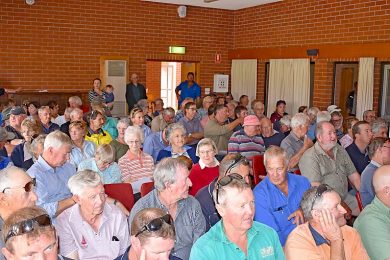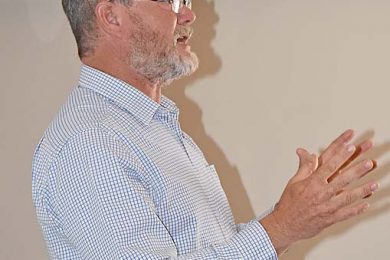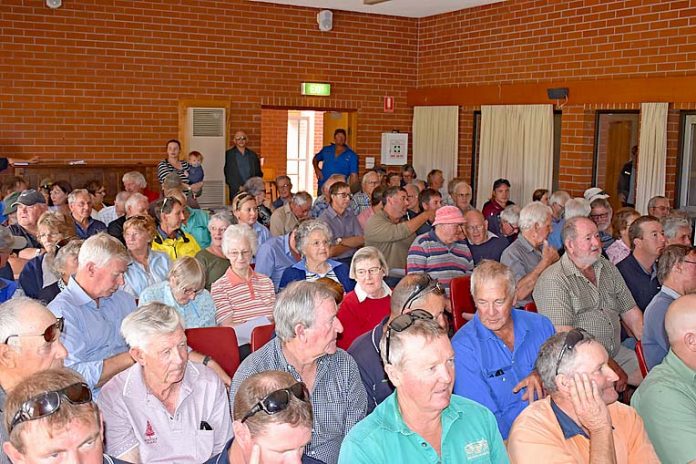
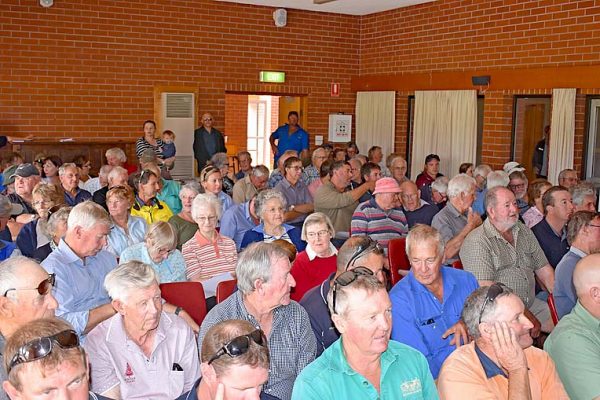
Picture: J.L. “FRED” SMITH
MILLICENT saleyards manager Andrew Robinson has publicly called on Wattle Range Council to keep the facility open for a further five years.
The 43-year-old saleyards are slated for closure in 2020 unless a solution to its ongoing financial woes is found.
Mr Robinson was among a gathering of 180 at the Millicent Civic and Arts Centre on Thursday at a public meeting called by council.
It followed a decision made at council’s January meeting to consult with stakeholders seeking solutions to the current operating deficits of the facility.
“We need five years to correct it,” Mr Robinson said.
In reply, chief executive Ben Gower said it may be a possible option.
Mr Gower led the 90-minute meeting which was chiefly a question-and-answer format.
He pointed out that cattle throughput had declined from 28,000 per annum to 8500 per annum in the space of a decade.
“It is not always about making a profit but losses are climbing,” Mr Gower said.
“We have to arrest the decline in cattle numbers.”
Mr Gower highlighted the fact Mr Robinson had successfully agisted and traded cattle and provided $45,000 each year to offset the losses at the yards.
In reply to a criticism from the floor, Mr Gower said the $50,000 annual depreciation expenses was realistic and in line with international accounting standards.
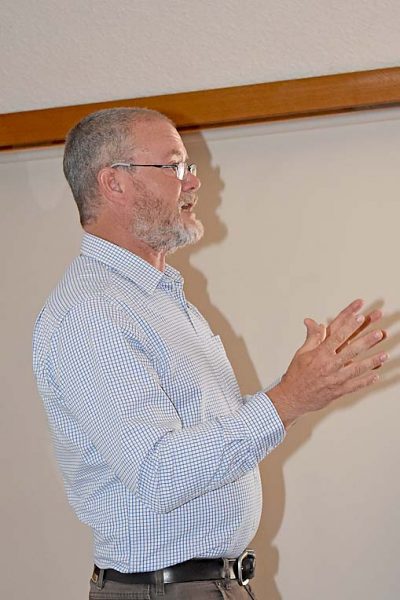
Millicent grazier Les Ellis was critical of council for not running a profitable saleyards operation as he said this was achieved elsewhere by major companies as well as a private operator at Mount Pleasant.
Beachport grazier Mark Wheal suggested a cooperative could be formed to take charge of the saleyards.
Mr Wheal also suggested the installation of solar panels to reduce operating costs.
In response to a query about accumulated losses from Millicent solicitor Wendy Botting, council’s development services director Steve Chapple said the average loss over the past six years was $113,000.
Mr Chapple said the 2017/18 loss was $208,000 while the anticipated loss for this financial year was $145,000.
Saleyards contractor employee Sandi Bell said the Millicent saleyards provided social interaction and a flow-on benefits to local businesses.
In response, Mr Gower said a consultants’ report commissioned by council said the saleyards had a direct economic benefit to the district of $270,000 per annum while the multiplier effect was $1.2m per annum.
Landmark agent Jim Noonan said the land use in the Millicent district had altered and larger operators were tending to send stock straight to the meatworks.
“We should be encouraging people to use Millicent,” Mr Noonan said.
“It is good avenue for small producers.’
“There is better presentation of cattle at Millicent as there is more room.
“Perhaps there could be a return to regular meetings of agents, graziers and council as this would keep everyone on the ball.”
Rendelsham grazier Garth Huppatz drew warm applause when he stated $10.8m worth of cattle are sold at Millicent each year.
“We have to keep Millicent going for the sale of the community,” Mr Huppatz said.
When queried about the sale of surplus land from the saleyards, Mr Gower said such funds were spent by council on projects such as roads.
Among the suggestions from the floor for increasing cattle throughput were a switch to Monday sales, a service kill abattoir and store cattle sales.
Mr Chapple said four parties had expressed an interest in purchasing the dormant sheep yards infrastructure but such a sale would only produce a short-term cash injection.
Wattle Range Mayor Des Noll OAM was the final speaker at the forum and said the future of the saleyards was a complex and emotive issue.
“We have to turn blue graph line (of declining cattle throughput) around,” Mr Noll said.
“Talk to the councillors and continue the conversation.”
In a media release issued by council later in the day, Mr Noll said he was impressed by the attendance at the public forum and the overwhelming sentiment of attendees, stating he looked forward to further debate in the council chambers in the ensuing weeks.
A small group of stakeholders hope to hold a subsequent meeting to further discuss and explore various options with council staff to improve the long-term sustainability of the saleyards.

